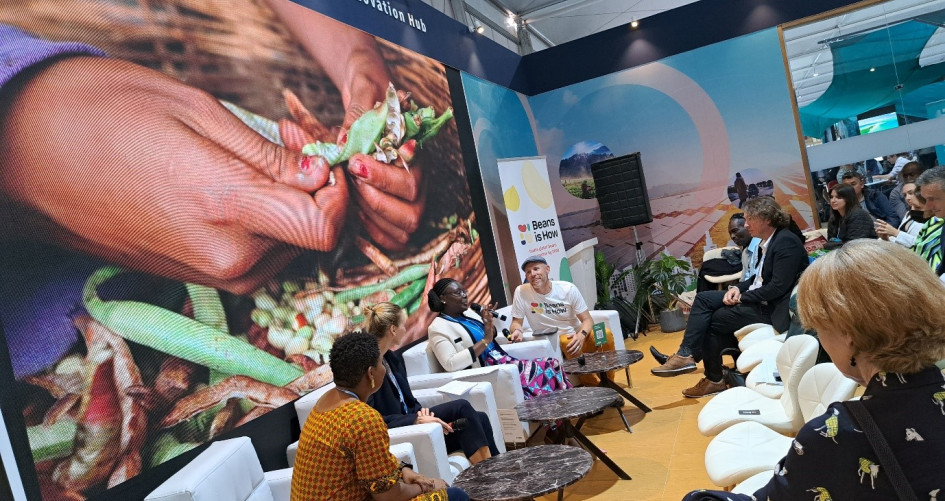Green hydrogen for the first time in the focus as a major solution to climate change
At COP27, participants for the first time heavily focused on green hydrogen as a key component of the transformation to clean energy, which is essential to achieve the central Paris Agreement goal of holding global average temperature rise to as close as possible to 1.5 degrees Celsius.
Green hydrogen is produced with help of renewable energy, notably wind and solar. It is above all urgently needed to decarbonize heavy-polluting industries such as steel and cement and can be used in hydrogen fuel cells in trucks and cars.
At the Global Innovation Hub, experts discussed specific transformative innovations to drive innovation in the green hydrogen value chain.
Whilst representatives of the African countries Mauritania and Namibia explained that their countries were keen to capitalize on the potential of green hydrogen and to develop industries while creating jobs, they also noted a further key area in which green hydrogen can be deployed: boosting food production with the help of zero-carbon ammonia fertilizer produced with the help of hydrogen. Ammonia production is very energy-intensive and presently causes around 1.8% of global carbon dioxide emissions.
“At this stage, exporting hydrogen is challenging in terms of transport and efficiency. Ammonia seems to the be the one of the ready solutions, there is a market already for that,” said Khoumbaly Lebhbid of Mauritania’s Ministry of Petroleum, Mines and Energy.
The fact is that whilst there is presently a huge demand for green hydrogen in the world, from sectors ranging from steelmaking to transport, there is very little of the substance available.
Bernhard Lorentz, Global Consulting Sustainability & Climate Strategy Leader at the consultancy Deloitte said that the focus therefore needs to be entirely on the supply side. “Now it’s about making big deals, getting the money together and making the investments in the global south,” he said.
Given the clear demand, the UGIH Virtual Hub can serve as a collaboration platform that can connect these countries to key solution providers including financiers such as technology providers, consulting institutions such as Deloitte, and other facilitating partners such as the Future Glean Architects, the UN Industrial Development Organization and the UN Convention to Combat Desertification.
UN Climate Change hopes that in the run-up to COP28 in Dubai next year, the hub could be used to facilitate matchmaking between suppliers and consumers and attract innovators, potential off-takers and enablers such as financiers to upscale development and deployment of green hydrogen of participating countries and cities.
Credit: UN Climate Change

